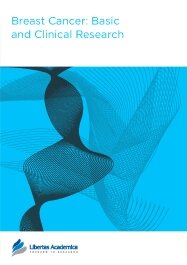

Publication Date: 30 Jan 2012
Type: Original Research
Journal: Breast Cancer: Basic and Clinical Research
Citation: Breast Cancer: Basic and Clinical Research 2012:6 31-38
doi: 10.4137/BCBCR.S8642

Introduction: Current guidelines recommend completion axillary lymph node dissection (cALND) in case of a sentinel lymph node (SLN) metastasis larger than 0.2 mm. However, in 50%–65% of these patients, the non-SLNs contain no further metastases and cALND provides no benefit. Several nomograms and scoring systems have been suggested to predict the risk of metastases in non-SLNs. We have evaluated the Tenon score.
Patients and Methods: In a retrospective review of the Swedish Sentinel Node Multicentre Cohort Study, risk factors for additional metastases were analysed in 869 SLN-positive patients who underwent cALND, using uni- and multivariate logistic regression models. A receiver operating characteristic (ROC) curve was drawn on the basis of the sensitivity and specificity of the Tenon score, and the area under the curve (AUC) was calculated.
Results: Non-SLN metastases were identified in 270/869 (31.1%) patients. Tumour size and grade, SLN status and ratio between number of positive SLNs and total number of SLNs were significantly associated with non-SLN status in multivariate analyses. The area under the curve for the Tenon score was 0.65 (95% CI 0.61–0.69). In 102 patients with a primary tumour <2 cm, Elston grade 1–2 and SLN metastases ≤2 mm, the risk of non SLN metastasis was less than 10%.
Conclusion: The Tenon score performed inadequately in our material and we could, based on tumour and SLN characteristics, only define a very small group of patients in which negative non-sentinel nodes could be predicted.
PDF (563.83 KB PDF FORMAT)
RIS citation (ENDNOTE, REFERENCE MANAGER, PROCITE, REFWORKS)
BibTex citation (BIBDESK, LATEX)
XML
PMC HTML

We are delighted about the speedy and professional process.
Facebook Google+ Twitter
Pinterest Tumblr YouTube